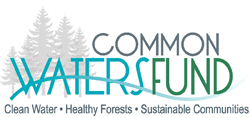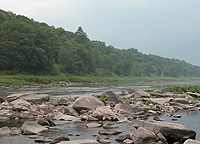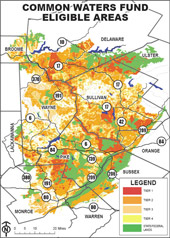FAQ - General Questions
What is the purpose of the Common Waters Fund?
The Common Waters Fund helps forest landowners in the Upper Delaware River Watershed improve the management and conservation of their private forest lands. Forests in the Upper Delaware River Watershed are essential to maintaining the extraordinary water quality of the Delaware River, but there are limited resources available to private landowners in the region to help them manage and conserve their forests. The Common Waters Fund fills this gap.
How does the Common Waters Fund work?
The Common Waters Fund provides incentives to qualifying landowners to implement forest stewardship plans, forest management practices, and/or conservation easements. These activities protect water quality by improving the health of forests, increasing the economic viability of forests so landowners can afford to keep their forest as forest, and permanently protecting forests with conservation easements.
Why is the Common Waters Fund needed?
Because there are limited resources available to forest landowners in the Upper Delaware River basin and managing and protecting forests is essential to protecting water quality. 15 million people rely on the Delaware River for clean drinking water. Managing and protecting the forests in the Upper Delaware River Watershed maintains the quality of this water, keeping treatment costs and water rates in check for water users.
How is the Common Waters Fund financed?
The Common Waters Fund principally depends on the generous contributions of services by its partners for its implementation. Initial funding has been financed by a generous grant from the United States Endowment for Forestry and Communities. The Common Waters Fund also accepts donations from individuals and hopes to attract more investors interested in protecting sources of drinking water in the future.
Why is managing my forest important?
Managing your forest keeps it healthy over the long-term. You can manage your forest for the values that are most important to you— wildlife, timber or scenic values, and others—and help to ensure your forest continues to provide these benefits throughout your life and the lives of your children and grandchildren. By managing and keeping your forest healthy, you are also providing benefits to your neighbors by protecting water quality, providing scenic beauty, supporting the local forest products economy, and providing wildlife habitat.






